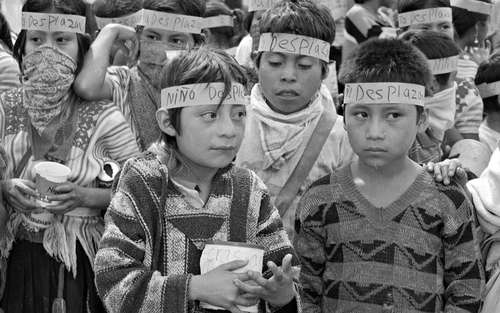Zapatismo and the Zapatistas of Chiapas are not museum pieces. They are as current as any of us
said journalist Gloria Muñoz to emphasize the validity of that movement, and as a reminder of the number of publications, exhibitions, documentaries and events that have proliferated on the occasion of the 30th anniversary of the indigenous uprising in that entity, which took place last January 1st.
It is not a movement whose primary place is the past; It is a story that is told in the present verb, a current story, and I would dare to say, to a large extent, a fortunate story, since it continues to be hope, and not just for the Tsotsiles, Choles, Zoques, Mames and families. tojolabales
he stressed.
It is not only an internal struggle; never, from the first day, was it a local fight; It was a fight that from the first second moved the entire country and, with evidence in hand, we can say that the entire world.
The also director of the digital magazine let’s get uninformed and collaborator of The Conference participated in the premiere of the documentary The reasons for the jungle: 30 years after the Zapatista uprising, by the photographer Antonio Turok and the poet Eduardo Vázquez Martín, which took place yesterday in the context of the homonymous exhibition presented at the Colegio de San Ildefonso.
Together with Antonio Turok, the photographer José Ángel Rodríguez and the Tzeltal anthropologist Delmar Penka, he celebrated that Zapatismo continues to have such a strong roots and presence at this time, as demonstrated by the aforementioned exhibition and documentary.
An anecdote that continues to be told
Considered said video fundamental piece
because it has many keys and is a good summary to understand what that movement has been in these three decades.
Specifically, he considered that the celebration of the 30th Zapatista anniversary that took place in Dolores Hidalgo was recorded, a community space established in a former farm that, in his opinion, summarizes the history, causes, current events and future of the Zapatista Liberation Army. National (EZLN).
It was managed in the cruelest Porfirista style: mistreated laborers, rapes, murders, white guards, this whole story that the first images of this exhibition tell us and which, I insist, are recent. They are the images that reflect the reality that gave rise to the emergence of the EZLN
.
Delmar Penka agreed to highlight the importance of this documentary, because “it gives an account of the things that have been achieved, of which it is necessary to continue working, but also of those that continue to be constantly imagined and reinvented.
This is part of a search and a struggle of the Zapatista indigenous peoples, but also of indigenous peoples who do not necessarily recognize themselves as such, but who are sympathizers of the struggle.
For the essayist also originally from Tenejapa, one of the virtues of Zapatismo is that It cannot be uprooted, since once someone is born in that context or recognizes themselves in it, they carry it forever (…) That also implies a kind of memory of something that seems distant and, however, is very present : the anecdote of Zapatismo and its presence continues to be told
.
With a duration of 40 minutes, the documentary was integrated with the other six audiovisual works and the 145 photographs in the exhibition. The reasons for the jungle: 30 years after the Zapatista uprising, that are presented at the Colegio de San Ildefonso (Justo Sierra 16, Centro Historico) until May 19, an exhibition organized by the photographic collective Bats’i Lab, from San Cristóbal de las Casas, Chiapas.
